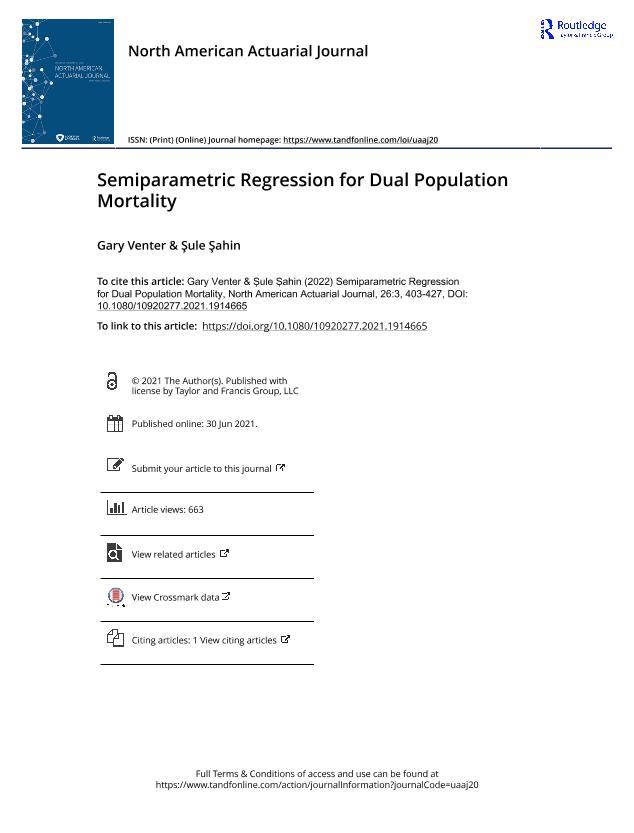Semiparametric regression for dual population mortality

Contenido multimedia no disponible por derechos de autor o por acceso restringido. Contacte con la institución para más información.
| Tag | 1 | 2 | Valor |
|---|---|---|---|
| LDR | 00000cab a2200000 4500 | ||
| 001 | MAP20220023764 | ||
| 003 | MAP | ||
| 005 | 20220915142435.0 | ||
| 008 | 220915e20220912esp|||p |0|||b|spa d | ||
| 040 | $aMAP$bspa$dMAP | ||
| 084 | $a6 | ||
| 100 | $0MAPA20180001970$aVenter, Gary | ||
| 245 | 1 | 0 | $aSemiparametric regression for dual population mortality$cGary Venter |
| 520 | $aParameter shrinkage applied optimally can always reduce error and projection variances from those of maximum likelihood estimation. Many variables that actuaries use are on numerical scales, like age or year, which require parameters at each point. Rather than shrinking these toward zero, nearby parameters are better shrunk toward each other. Semiparametric regression is a statistical discipline for building curves across parameter classes using shrinkage methodology. It is similar to but more parsimonious than cubic splines. We introduce it in the context of Bayesian shrinkage and apply it to joint mortality modeling for related populations. Bayesian shrinkage of slope changes of linear splines is an approach to semiparametric modeling that evolved in the actuarial literature. It has some theoretical and practical advantages, like closed-form curves, direct and transparent determination of degree of shrinkage and of placing knots for the splines, and quantifying goodness of fit. It is also relatively easy to apply to the many nonlinear models that arise in actuarial work. We find that it compares well to a more complex state-of-the-art statistical spline shrinkage approach on a popular example from that literature. | ||
| 650 | 4 | $0MAPA20080555306$aMortalidad | |
| 650 | 4 | $0MAPA20080579258$aCálculo actuarial | |
| 773 | 0 | $wMAP20077000239$g12/09/2022 Tomo 26 Número 3 - 2022 , p. 403-427$x1092-0277$tNorth American actuarial journal$dSchaumburg : Society of Actuaries, 1997- |

